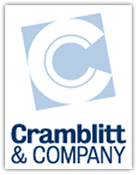PR in practice: Anatomy of the case study, pt. 2
June 15th, 2009 | Comments Off on PR in practice: Anatomy of the case study, pt. 2
Part 2 of “Anatomy of a Case Study” covers specific interview questions and preparation before writing.
Here are some basic questions (outside of the 5 Ws and an H) that can be used to get detailed, results-oriented answers that are the foundation of good case studies:
· What factors made you decide to purchase Product A?
· How did Product A compare to other products on the market?
· What process did you go through to make your buying decision?
· Did you have metrics or goals set for Product A before your purchase? Are those metrics being met? Do you anticipate the metrics being met? If metrics will be exceeded, by what percentage?
· What effect is Product A having on time-to-market? Can you give a percentage increase in speed?
· What effect is Product A having on quality? Can you give a specific example?
· How is Product A saving your company (or potentially saving your company) money? How much money do you think you’ll be able to save? (dollar value or percentage)
· Is Product A helping increase customer satisfaction or participation? How? What effect has that had on your company and its products and/or services?
· Has Product A eliminated any steps in your processes? If so, how? Why is it significant?
· Can you describe a project in which Product A has been particularly effective?
· What was the process before implementing Product A?
· What is the configuration (no. of systems, hardware, name of software module, peripherals, etc.) of Product A?
· Is Product A being used in conjunction with other products? Which products and how are they used together?
· In what departments or facilities is Product A being used?
· Has Product A improved communication between departments, functions or facilities?
· How has Product A helped your company become more competitive?
· In what upcoming projects will you use Product A? When will they take place and how will Product A help you improve your results?
· Do you expect Product A to be used by other departments, functions and facilities in the future? Which ones? How will it be used?
· Anything to add that we haven’t covered?
Before Fingers Hit the Keyboard
Before you begin writing, read over your notes a few times thoroughly, embedding the information in your head. Think about these things:
· Similar stories you’ve read in the publication(s) targeted for the story. How are they presented? What information do they highlight? How long are they? For whom are they written?
· The single, most unique aspect of the story.
· Measurable, definable benefits that can be documented.
· Prioritizing information from a reader’s standpoint, from most to least important.
· Quotes that can be used to enhance information, express opinion, or act as an anchor to the story.
· Look for irony, coincidence, humor, history, a tie-in to something familiar, or a specific scene that can set a stage.
Based on the information above, prepare an outline of the story. Don’t worry if there are still some holes or if you don’t have the lead figured out. Holes can be filled or worked around and leads often bubble up once the basic story is down on paper.
Next: Writing and presenting the story.

